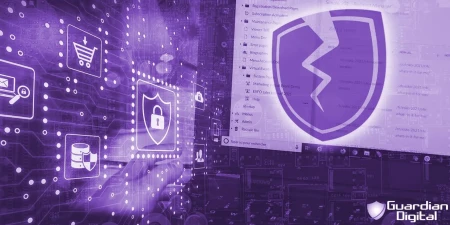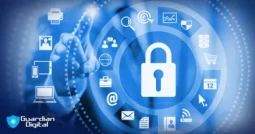How Can I Identify Indicators of Compromise (IOCs) & Safeguard My Digital Assets?

In today's interconnected digital landscape, the ever-present threat of cyberattacks looms large, making it imperative for organizations and individuals to stay vigilant and proactive in managing cybersecurity risks. One crucial aspect of cybersecurity is identifying indicators of compromise (IOCs) - telltale signs that an unauthorized entity may have compromised an information system.
By recognizing and responding to IOCs effectively, organizations can bolster their cybersecurity defenses and safeguard their digital assets from malicious actors.
What Are Indicators of Compromise?
Indicators of compromise, or IOCs, are red flags that signify potential security breaches within an organization's network or systems. These indicators include suspicious network traffic patterns, unusual system behaviors, unauthorized file modifications, and anomalous user activities. Cybersecurity professionals can detect and respond to threats by closely monitoring these IOCs before they escalate into full-blown security incidents.
What Types of Indicators of Compromise Exist?
There are several types of indicators of compromise that organizations should be aware of:
- Network IOCs: These include suspicious network traffic, such as connections to known malicious IP addresses, unusual port scans, or communication with command-and-control servers used by malware.
- Host-based IOCs: These are indicators found on individual host systems, such as unauthorized changes to system files, unusual login attempts, or unfamiliar processes running on a machine.
- File-based IOCs: These indicators involve malicious files or executables that may have infiltrated an organization's systems, such as malware payloads, suspicious email attachments, or unauthorized software installations.
Why Is Identifying IOCs Critical for Effective Cybersecurity Management?
The ability to identify IOCs is a crucial component of effective cybersecurity management. Failing to recognize and respond to these indicators can result in severe consequences, including data breaches, financial losses, reputational damage, and regulatory fines. By proactively monitoring and analyzing IOCs, organizations can detect security incidents early, mitigate potential risks, and minimize the impact of cyber threats on their operations and stakeholders.
Techniques for Identifying IOCs
There are several techniques that organizations can leverage to identify IOCs and enhance their cybersecurity posture:
- Monitoring System Logs: Regularly monitoring and analyzing system logs can provide valuable insights into potential security incidents, including unauthorized access attempts, unusual user behaviors, and suspicious network activities.
- Utilizing Security Tools: Leveraging security tools such as Intrusion Detection Systems (IDS), endpoint security solutions, anti-virus software, and cloud email security solutions can help organizations detect and respond to IOCs in real time. These tools can be configured to alert security teams of any abnormal activities or potential security breaches.
- Incident Response Planning: Developing a comprehensive incident response plan that outlines the steps to be taken during a security incident can help organizations effectively manage and mitigate the impact of IOCs. This plan should include roles, responsibilities, communication protocols, and escalation procedures.
- Threat Intelligence: Incorporating Threat Intelligence feeds and services into cybersecurity operations can provide organizations with up-to-date information on emerging threats, vulnerabilities, and IOCs. Organizations can proactively identify and respond to security risks by staying informed about the latest threat landscape.
Best Practices for Managing IOCs
To effectively manage indicators of compromise and enhance cybersecurity resilience, organizations should adopt the following best practices:
- Regular Security Audits: Regular security audits and vulnerability assessments can help organizations identify potential weaknesses in their systems and processes that malicious actors may exploit.
- Sharing IOCs: Establishing a process for documenting and sharing IOCs across different security teams and stakeholders can help organizations collaborate and coordinate their efforts in detecting and responding to security incidents.
- Employee Training: Providing cybersecurity awareness training can help raise awareness about the importance of identifying and reporting suspicious activities or potential IOCs. Educating employees on best practices for cybersecurity hygiene can help prevent security incidents.
- Continuous Monitoring: Continuous monitoring of network traffic, system logs, and user activities can enable organizations to detect IOCs in real-time and respond swiftly to potential security threats.
- Regular Updates: Keeping security systems, software, and policies up-to-date with the latest security patches and configurations can help organizations protect against new and emerging IOCs that may threaten their digital assets.
Keep Learning About Managing Cybersecurity
Identifying indicators of compromise is a critical skill in effectively managing cybersecurity risks and protecting digital assets from malicious actors. Organizations can enhance their cybersecurity resilience and minimize the impact of potential security incidents by understanding the types of IOCs, adopting appropriate techniques, and implementing best practices for managing IOCs. Remember, cybersecurity is a shared responsibility that requires continuous vigilance, proactive monitoring, and collaboration across teams to ensure the safety and security of digital assets in an increasingly interconnected world. Stay informed, stay vigilant, and remain secure.
- Learn about the differences between SIEM and SOAR cybersecurity platforms.
- Understand the benefits of outsourced email and how third-party organizations can help.
- Choose the right email security services for your business.
- Implement best practices for phishing prevention, spam filtering, and malware protection.
- Stay updated on the latest risks to your digital security.
Other FAQs
- What Is Guardian Digital EnGarde Cloud Email Security?
- FAQs: What Are Some Examples of Malicious Code?
- How to Properly Scan Your Windows Computer for Malware & Remove Malware from Your PC
- FAQs: What Are Denial of Service (DoS) Attacks?
- FAQs: Why Outsource Businesses Email Security?
- What Is Domain Spoofing?
- What Are Insider Threats & How Can You Reduce Your Risk?
- The Silent Assassins: How Impersonation Attacks Target CEOs via Email
- How Can I Choose the Right Email Security Service for My Organization?
- What Are the Benefits of Managed Security Services Providers (MSSPs)?



